
Despite the week-long cold snap, Torontonians headed out in droves to the city’s east-end beaches on Monday to take in the temporary pavilions of the Winter Stations – including the Belly of a Bear – as well as a permanent fire pit by architect Douglas Cardinal.
Local firm RAW Design, along with Ferris + Associates and Curio, initially launched the Winter Stations competition last year as a way to get people outdoors and to enjoy the winter climes. The project was modelled after a popular event held annually in Winnipeg, called Warming Huts, where small architectural follies conceptualized by various design teams are installed along the Red River during the coldest months of the year.
The success of the inaugural Winter Stations has led to the latest installation of fun and quirky pavilions along Kew, Scarborough and Balmy Beaches, designed by university students and firms from across Canada and abroad. In total, seven pavilions were chosen from 378 competition entries. They will remain in place until March 20, 2016.
While some are purely sculptural, others provide modest shelter from the icy winds and cold, including a see-through sauna and shelter lined in vintage fur. Renowned architect Douglas Cardinal was also on hand on opening day to introduce another beachfront initiative: a permanent fire pit. The pit is surrounded by a semi-circular bench system designed by Cardinal and made of formed wood that is charred on one side.
Here are some of the highlights from the opening day of Winter Stations:
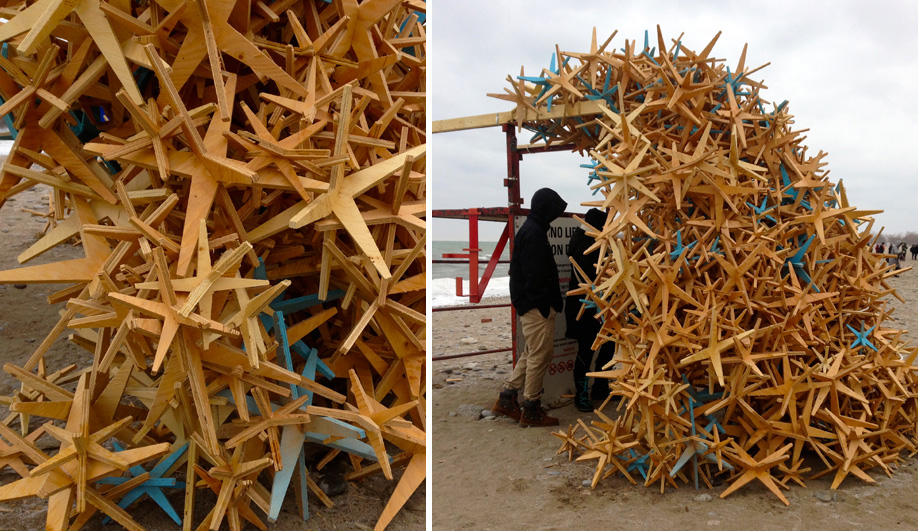
Flow by Sandbox’s Calvin Fung and Victor Huynh
A tangle of star-shaped wooden ice crystals half cover one of the lifeguard stations. The 3-D building blocks were digitally generated and are held in place by their spiky form, requiring very few tools to assemble.

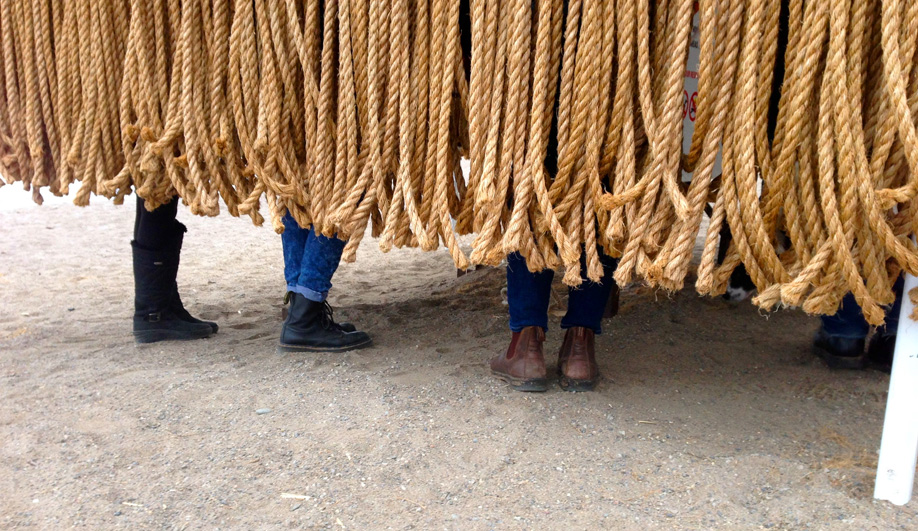
Floating Ropes by Elodie Doukhan and Nicolas Mussche of Montreal’s MUDO
Hundreds of metres of rope have been tied and suspended from a square frame that surrounds a lifeguard chair, creating a hut-like form that sways like hair in the wind.

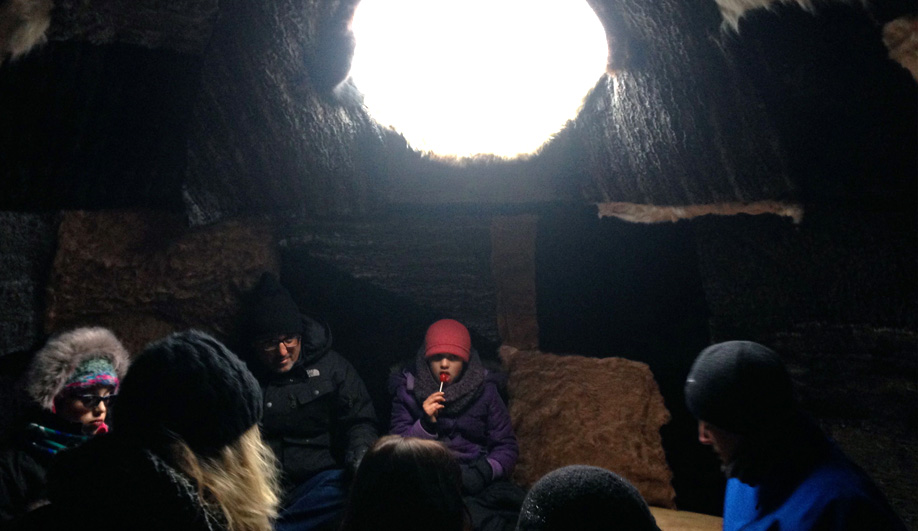
Belly of a Bear by Caitlind RC Brown, Wayne Garrett and Lane Shordee of Calgary
Perched on the beach like a giant marble, Belly of a Bear was one of the most crowd-pleasing and eye-grabbing, with its charred wood exterior contrasting snow-covered sand. Visitors lined up to climb into its spherical interior, lined in vintage fur. A round window at the top provides an ideal spot for stargazing at night.
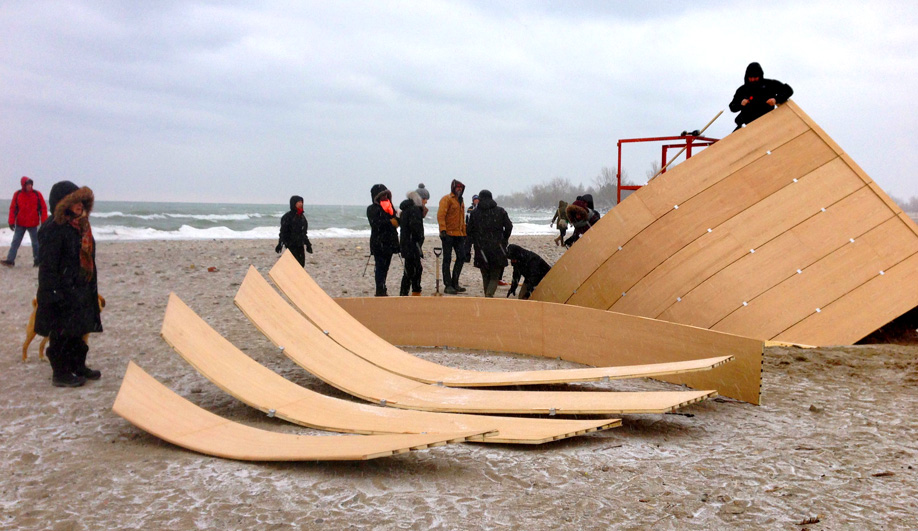
Steam Canoe by students at OCADU
One pavilion was still under construction on opening day, but its final form, in the shape of an up-ended canoe bow, could be made out from the pieces waiting to be nailed in place. When complete, the curved bent wood will surround the lifeguard stand, and solar tubes at the back of the structure will convert snow into vapour to emit a halo of fog.

Sauna by Claire Fernley and James Fox of FFLO
Claire Fernley and James Fox, principals of the British landscape studio FFLO, installed Sauna, a wooden framed structure wrapped in transparent plastic. Brave souls are invited to dawn their swimming gear and climb inside, where they can have a seat and keep warm near a wood-stocked stove, located at one end.
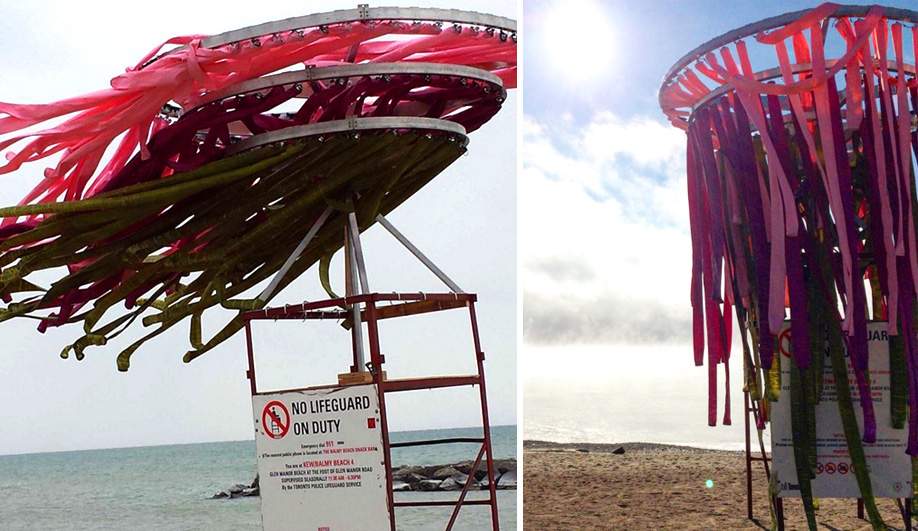
Aurora Borealis by students of Laurentian University
Pink and red streamers attached to a spinning rack are meant to fly in circles as they catch the wind. But the breezes blowing off Lake Ontario were a bit too strong, causing the entrails to get tangled in the mechanism.

Lithoform by Ryerson University
Architectural students from Ryerson surrounded one of the lifeguard stands with a massive igloo-like form. A narrow entrance invites visitors to step out of the wind, while four colourful “chimneys” cast a pattern of polychromatic light into the space. Photo by Khristel Stecher
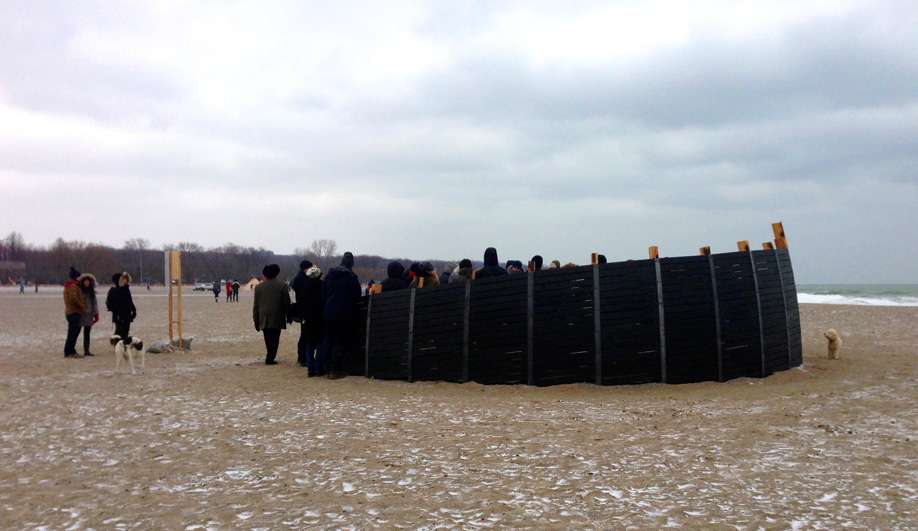
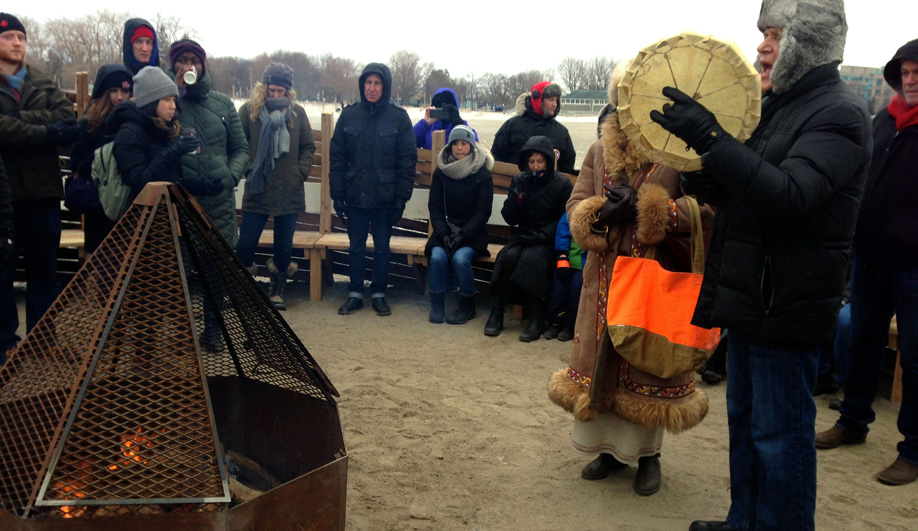
Fire pit by Douglas Cardinal
On the same day Winter Stations opened, another beachfront installation was moved into place: a permanent open fire pit with a surrounding berm-like wall for seating, designed by renowned architect Douglas Cardinal, who is shown here performing a drumming ritual for the occasion.
